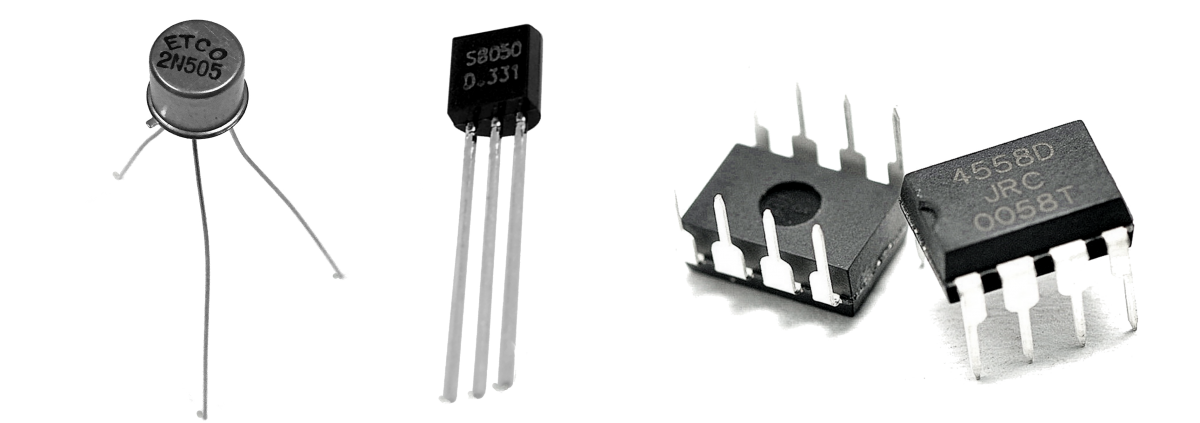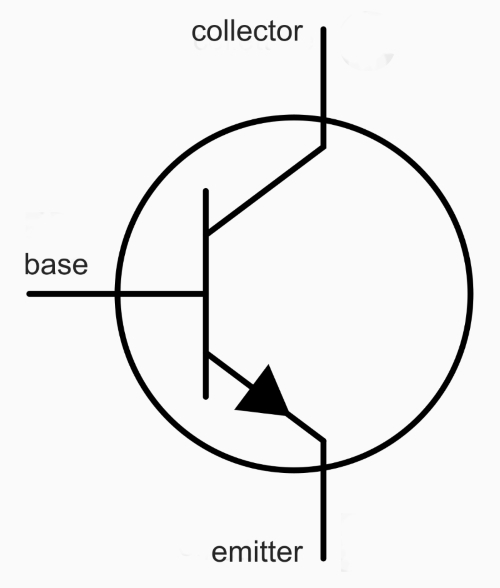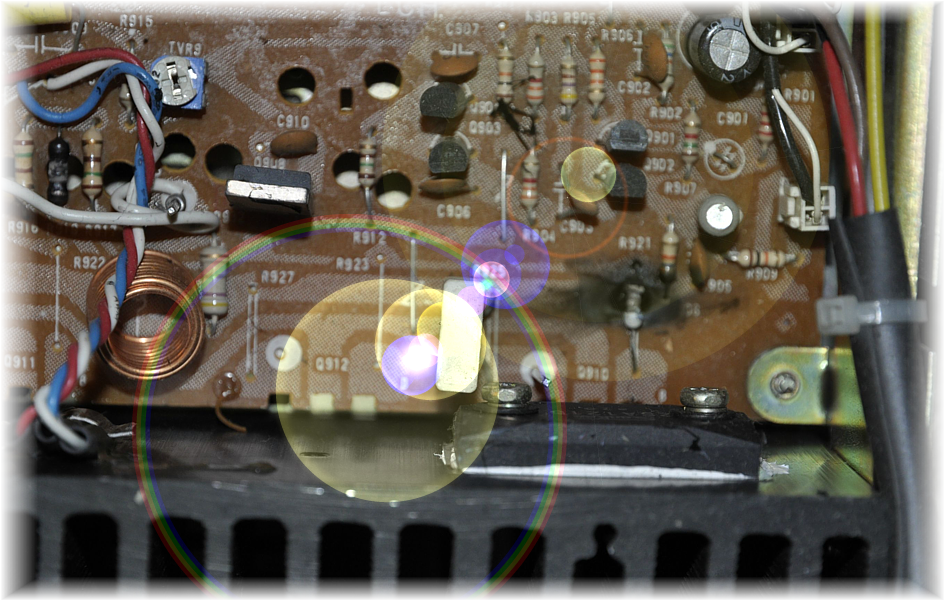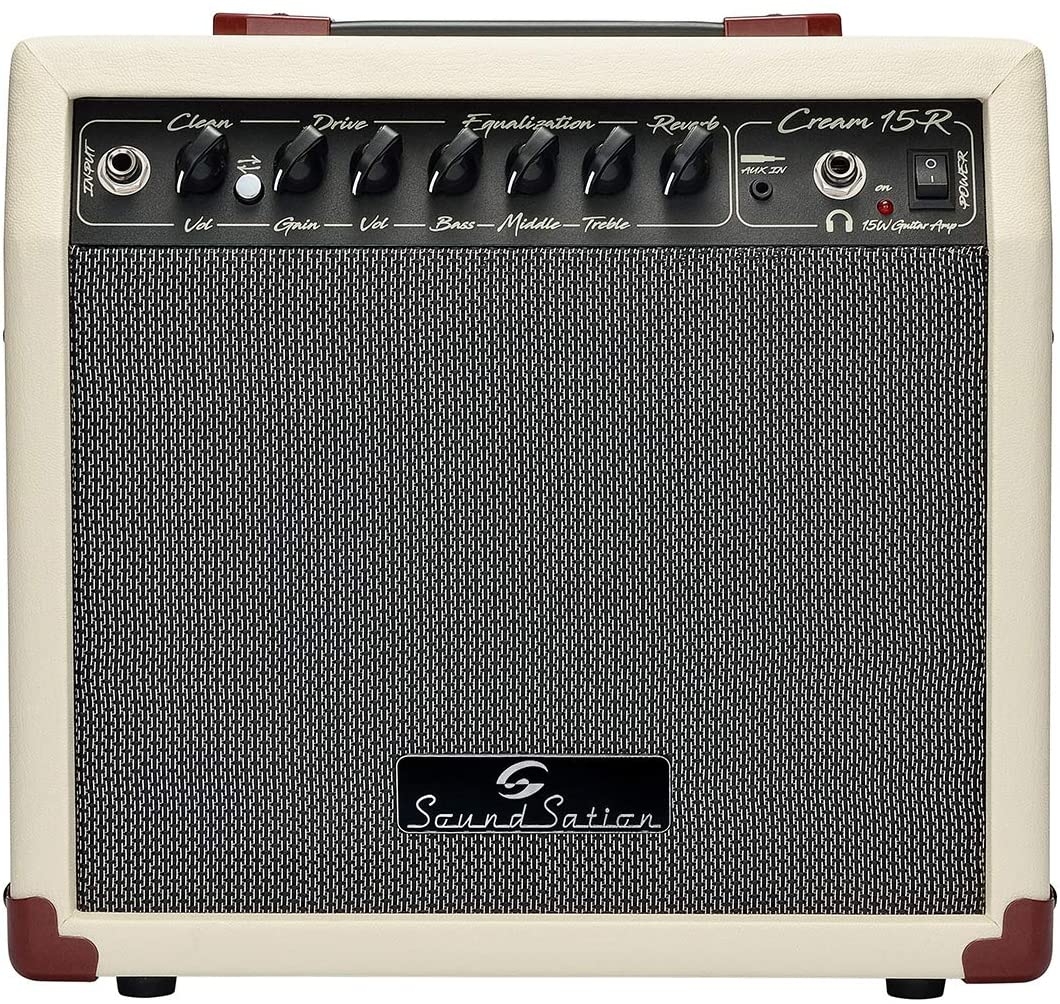In this article we’ll focus on electric guitar
most popular and inexpensive amplifiers: solid state ones. We are going to
explain how they work, how they spread and which are their pros and cons as compared
to their tube “enemies”.
To get an overview on the electricguitar and its amplification
development in the first half of the
20th century, please read the articleabout tube amps. Here we are going to talk about solidstate amplifiers (sometimes called transistor amplifiers or simply SS).
What is a
transistor?

Studies on transistors
started in the Twenties of the 20th century. The word transistor comes from
merging the terms transfer and resistor. Transistors are electronic components based on the properties of
some semiconductor elements such as
Gallium, Germanium and Silicon. These elements substantially are
non-conducting (or almost non-conducting), unless they undergo an electrical field; in this condition they
start conducting at different levels.
To make a transistor, a “doped” crystal fragment of semiconductor is embedded in a case that can be
made from several materials, such as plastic, metal, silicone, etc.; hence the solid state definition compared to the vacuum of tubes.
Making a heavy simplification, transistors
operate by means of electron passing among three differently doped spots: the emitter (that’s where electron start
moving), the base (an intermittent
flow regulator), and the collector
(the receiving spot). Whereas tubes work under high voltage variations,
transistors work under low current variations.
As a result in our area of interest, the incoming signal level increases and it is amplified.

Another possible function of a
transistor is acting as an on/off
switch, as it happens in digital devices for instance.
Transistors can be singly used as discrete parts, or placed in large quantity inside an integrated circuit (IC or
chip); we usually find them as chips inside
the circuit boards of amplifiers and effects.
Sound and distortion in solid states

Whereas tube distortion is generally
recognized as gradual, dynamic, rich of pleasant
harmonics and middle to bass frequency focused (referring to the frequency
range of an electric guitar), solid state amps generated distortion seems sudden,
with levelled dynamics, “harsh” from odd harmonics
and high frequencies focused. In a few words: no one would draw a project to
get a mere distortion from a transistor
amp. As far as guitar amplification, what’s good about transistors as compared
to tubes can be summed up as follows:
- great manufacturing
economy of the component
- low heat production
- reduced size and weight
- simpler and less frequent servicing (if the project is well
done)
- lower current consumption
- higher resistance against impacts and vibrations
- no need of an output transformer towards the speaker (a largely responsible
component in tubes related sound)
- smaller and cheaper power supply transformers.
Though it makes solid states still attractive
today, a lesser highlighted feature is their restrained dynamics compared to tube amps; this makes them suitable
for practice, rehearsal and use at home as well
as in small spaces, even if they provide a certain power.
Cons to be accepted from solid state
amps are:
- more complex design to get good audio
results
- electrical and heating problems susceptibility
- lesser volume level at same power
- reduced dynamics range
- clipping, or distortion advent in sound,
rough, without an overdrive or saturation stage. (It’s clear that this
happens in the regards of human ear, and when no circuital tricks are
adopted; in fact very appreciated effects as the popular TubeScreamer boast a “tube” sound though
they are solid state).
FETs
The Field Effect Transistor or FET is a very effective kind of transistor. It features a variable section link of doped semiconductor between the poles; its way of working reminds a regulated continuous flow rather than an on/off switch. To our purposes, the most known FETs are J-FETs (Junction-FETs) and MOS-FETs (Metal Oxide Semiconductor-FETs). MOS-FETs are very appreciated in the audio field for their soft clipping and a tube-like sound.
Transistors
birth and rise
Since the time of first electrified instruments till the first Sixties
at least, the dominant technology in amplifiers manufacturing, as well as that
of any other electronic device, depended on thermionic tubes. With great
strides, let’s summarize the diffusion of solid
state amps for the electric
guitar.
- ’50s – A relentless diffusion of transistors
starts in previously tube based analogue circuits, including amplifiers.
- ’60s – Time for the boom of little transistor radios powered by batteries!
Among the first solid state guitar amplifiers there are models from
Italian Davoli Krundaal, American
Kay, Kustom and Gibson, British
Burns, Vox and WEM. Fender arrives in 1966 with the Super
Showman amp (designed by humbucking pickup inventor Seth Lover). Meanwhile
transistors are being used in legendary pedal effects such
as the fuzz. At first they are Germanium made; due to the unsteadiness of this
element, they will be replaced soon by Silicon based ones; also, silicon is a very cheap and
diffused semi-metal.
- ’70s – Transition to solid state is made, with
the first transistor Marshalls, the
powerful Sunns and the iconic Roland Jazz Chorus.
- ’80s – It seems tubes are almost destined
to extinction. All the big builders offer solid state models too, sometimes
enhanced by effects as distortion, compression and modulation. Guitar
players are giving in their tube amplifiers to buy new solid states, lighter,
more manageable and cheaper.
- ’90s – After tube amps withdrawal, changes
of mind in musicians and the coexistence of both types of amplifiers – in
mixed designs too – some heavy rock guitarists’ fame and the commitment of
manufacturers the likes of Mesa/Boogie,
Soldano, VHT and Rivera restore tube amps into
favour. Solid states seem relegated to the budget and amateur range, but
their live use by pro and semi-pro
guitar players actually keeps on all over the world.

The
challenge continues…
During the ’90s and the 2000s, developments
in electronics and computer science have reserved lots of sensational surprises,
as a proof of technology driving force over music and musical instruments.
This will be one of the next topics we’ll deal with: digital amplifiers.
